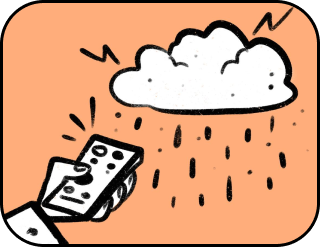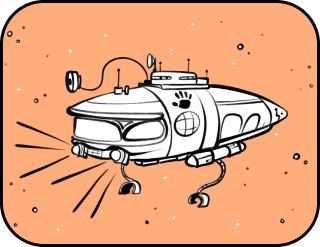Artificial financial intelligence: the future of finance
“The most dangerous things in the world are cocaine and a salary. The most pleasant sounds are the rustling of money at the ATM and the notification of an e-wallet top-ups.”
Let’s admit it, everyone wants money. Preferably easy money, the kind that you wouldn’t have to get off the couch or exert any effort for. Who even came up with the dubious phrase, “To earn money, you need to work”? It’s much better to just sleep or watch TV, sip cold beer at a football match, or have a wise and crafty Genie who always knows when stocks will rise and whispers in your ear, “Buy oil, my Lord, it will soon be the new gold!”
Investing has now become accessible and engaging for everyone, like a game where anyone can become a wise investor without delving into the complexities of the financial world. And why bother with unnecessary intricacies when you already have all the tools needed to multiply your capital without risk?
Who Invented the Financial Lamp?
Back in the distant 80s, when mobile communication was in its infancy, and computers were the size of refrigerators, scientists decided that neural networks were necessary. Time passed, and resourceful entrepreneurs decided that neural networks were necessary for the financial market: trained networks were supposed to predict stock price jumps. David Gelbaum, the founder of TGS Management, was the first to unleash computer algorithms on the stock exchange, like dogs hunting for profit. In the digital trading spaces and data streams, algorithms hunted for golden nuggets.
In 1987, Security Pacific National Bank in the USA decided it was time to curb overly mischievous fraudsters and created an artificial commando to enhance the security of bank accounts and clients’ money. Thus, computers and algorithms became new players on the financial fields.
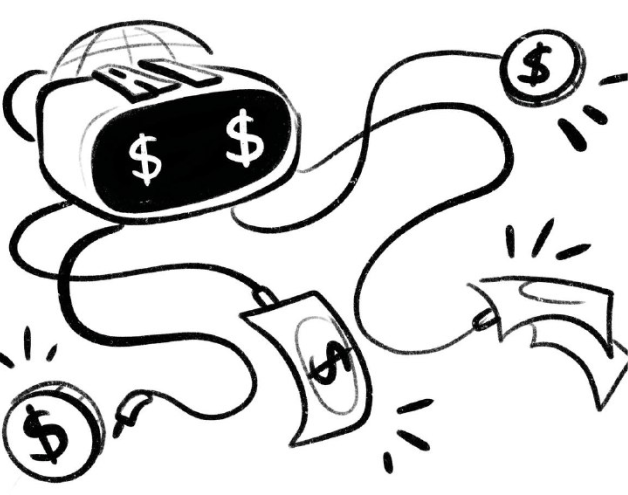
Financial Predictor
A financial neural network – a brain made of chips and algorithms – can do things that make the masters of financial pyramids burn with envy. For example, it can guess whether the dollar will be worth as much as a pink diamond tomorrow or drop in price like candy at a supermarket. True, sometimes such forecasts sound like “politicians’ promises” – they say one thing today and another one tomorrow. But does it matter?
The neural network will explain why the stock of a company that just caused a grand scandal shot up or why the stock of a leading firm fell, even though it just won a Nobel Prize in marketing. The Neuro-Genie will kindly assemble an investment portfolio that will delight you with fruits as if you had grown it yourself from a seed, but be ready for it to sometimes grow slower than your lawn at home.
The neural network will convince you that the risk of going bankrupt on the stock exchange is equal to the risk of losing all your money in a casino if you only play roulette with one number and may even find such sophisticated ways to reduce your tax burden that you’ll want to put it in a uniform and send it to calculate taxes.
The neural network can create a plan for you: “How to become a millionaire by retirement if you start saving right after birth.” In general, a financial neural network is like a financial wizard that never gets tired and never makes mistakes.
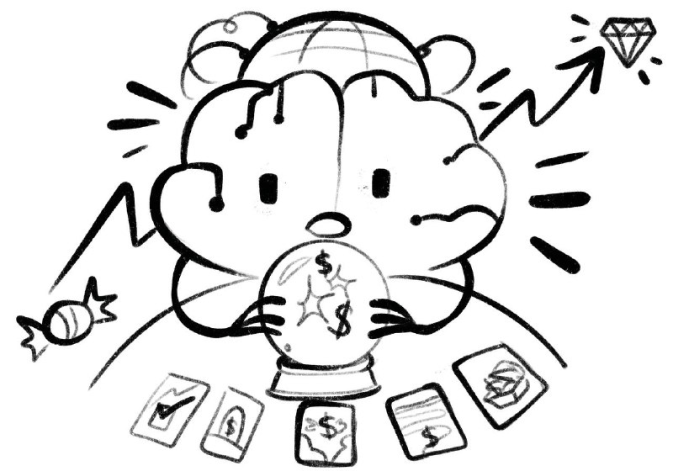
Financial Mind
Every day, financial markets spew out entire rivers of information, like an informational Vesuvius. Traders, considering themselves invincible Terminators armed to the teeth in technological armor, try to catch this data flow in their analytical nets, still hoping for a golden Genie in the form of a profitable strategy. And developers are happy to give them the cherished lamp from which the Genie jumps out with a whole list of settings for successful speculation and investing.
In the realm where artificial intelligence not only analyzes the market but also jokes better than your uncle at a family dinner, platforms like Betterment and Wealthfront become financial stand-up comedians.
They gracefully optimize portfolios according to current trends, but who will provide guarantees?
Analytical giants like Bloomberg Terminal and Thomson Reuters Eikon conduct deep data analysis and make predictions, helping traders and investors make informed decisions. Are they always right?
Vanguard Personal Advisor Services – a soul-infused artificial intelligence – is not only smart but also kind because it has access to real human consultants. This is partly reassuring. But advisors can also be wrong.
BuSumo and Talkwalker is a spy equipment for social networks, identifying trends and insights about brands. And what if their secrets are also under someone’s watchful eye?
Domeyard promises to process millions of data points faster than homegrown investors can say “buy-sell”; they make deals faster than a “financier” can snap their fingers.
And Quantopian offers traders a virtual sandbox to test investment tools. It’s like YouTube, where instead of likes, traders get money.
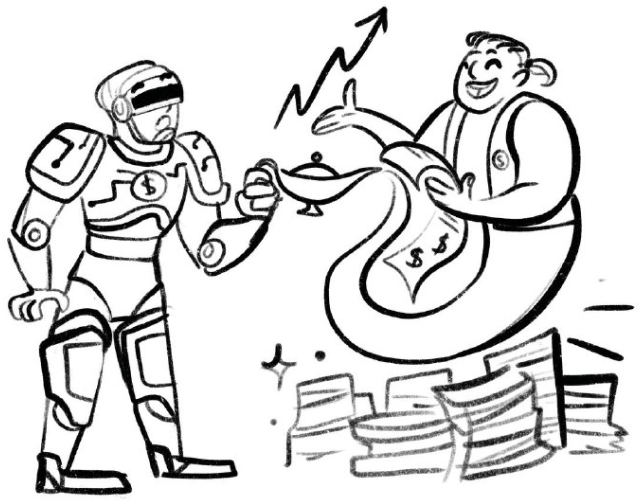
Where Do You Fit in This Scheme?
“It doesn’t work unless you work.”
The almighty Neuro-Genie is unlikely to reveal all his tricks. Why does he insist that the stock of company X is the next pickled shark, while the stock of Y is another “bubble”? Because the artificial specialist decided so.
The neural network is not a secret oracle; its essence is in assessment and fitting to an answer. This means that based on the analysis of previous data, it can calculate the next data with some error, but this only works if these results are generally measurable.
Often, positive examples of using neural networks for weather forecasting are cited to justify their application in investments and trading. The most surprising thing is that it really works for weather forecasting! However, those who draw such analogies rarely think about the fundamentally different conditions of predicting weather and financial phenomena.
The artificial Genie can also be manipulated and deceived for money, like a gullible tourist. For instance, when processing large volumes of information, “noise” (distracting) data can confuse it so much that it starts buying stocks that no one actually needs.
Any system can be modeled, provided that the system is self-sufficient, needing no other external data except the initial state: its description or data for analysis should fully represent all possible information about the system. In this case, a neural network or artificial intelligence, through the evaluation of previous states, can give accurate predictions.
In the case of analyzing and predicting financial markets, the system is far from being self-sufficient: quotations are merely a consequence of many events not accounted for in this statistics. Even if you complement the history of quotations with numerous data from economic, financial, political, and social spheres, the system will not become self-sufficient.
The issue is that the main component in this system, which must be introduced into the model, is the human. Your reaction sets the future market behavior, being both cause and effect. This must be considered along with external influences, such as news. But it is not just an individual that needs to be modelled, but the entire market participants collectively, and not just the market. It would require considering company management’s impact on their stock prices and much more.
This task can be solved, but at the current stage, it would require a manifold increase in data processing flow and, consequently, system computing power. This essentially means that the smart Neuro-Genie is not yet capable of directly solving the forecasting task.
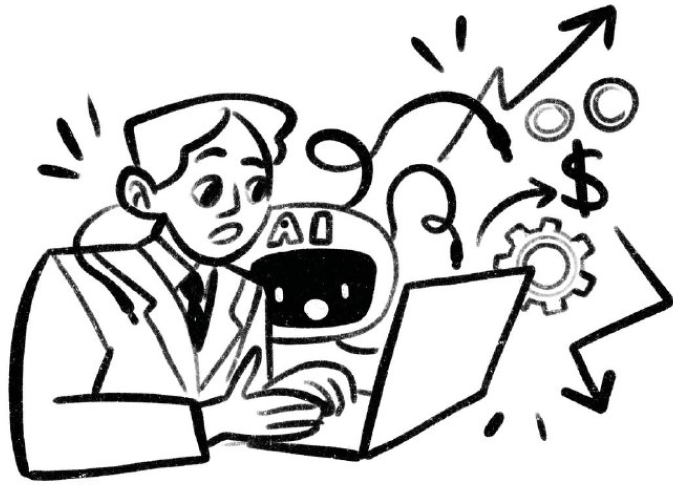
Don’t Miracles Happen?
Specialists involved in neural networks in trading and investing say that it’s much easier to teach artificial intelligence to trade than to forecast the market.
Although a neural network cannot yet predict market behavior, it can handle other tasks. It’s quite possible to teach the artificial wizard to identify trends and flat areas on the market with high probability. Just this alone will allow using AI in trading systems with a fairly high level of profitability.
In most cases, making trading decisions – entry points into the market, profit-taking, and loss limitation can be codified in a limited set of rules, and this is precisely a task for neural networks. All that’s needed is historical data supplemented by external factors for training and accurately formulating conditions for profit extraction and loss limitation. As a result, a decent trading robot will be obtained.
Another possible application of neural networks in investments today is conducting fundamental analysis at all levels. In this regard, artificial intelligence can quite cope with the tasks of forecasting trends in the global economy, the country’s economy, and industry conditions. It will help select promising companies for stock purchases, assess the prospects of including other assets in the portfolio, and ensure quality penetration of specialized firms into other production sectors with a given level of risk and forecasted profitability over a certain interval.
Artificial intelligence can also become an effective assistant to financial analysts and an indispensable partner to investment advisors, but replacing humans in these areas of work is something it is not yet ready for and probably won’t be for a long time.
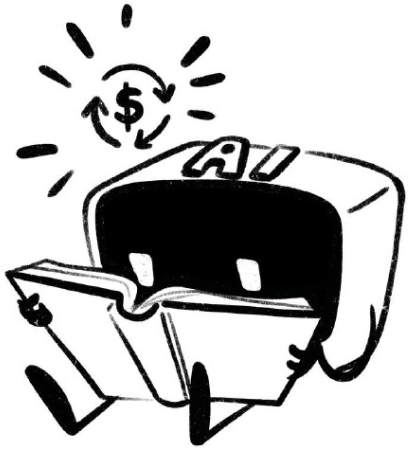
Aftertaste
Remember how those who got their hands on a Genie from a magic lamp behaved: eagerly giving away wishes without thinking about the consequences, and just as eagerly entrusting the Wizard with responsibility for their own and others’ lives? Like any assistant, the Neuro-Genie needs human control and common sense. It can be useful and determined to do only good deeds, but remember that money loves silence. And awareness.
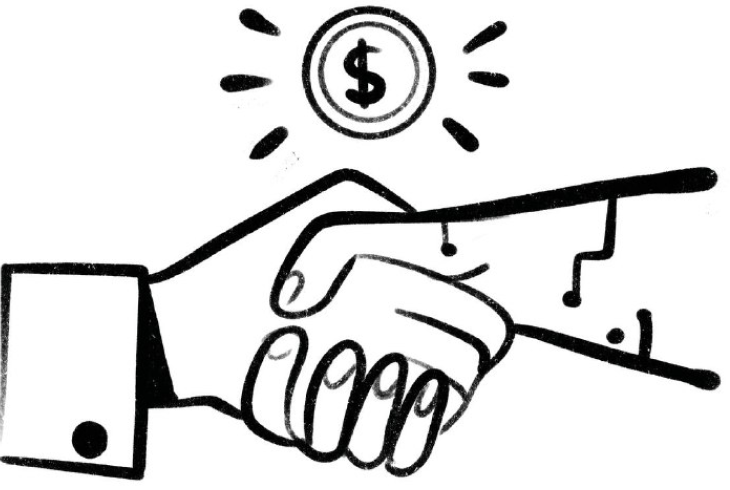
Is there life on Mars, or is there no life on Mars? Join the eternal debate on paradoxes!
Thank you!


